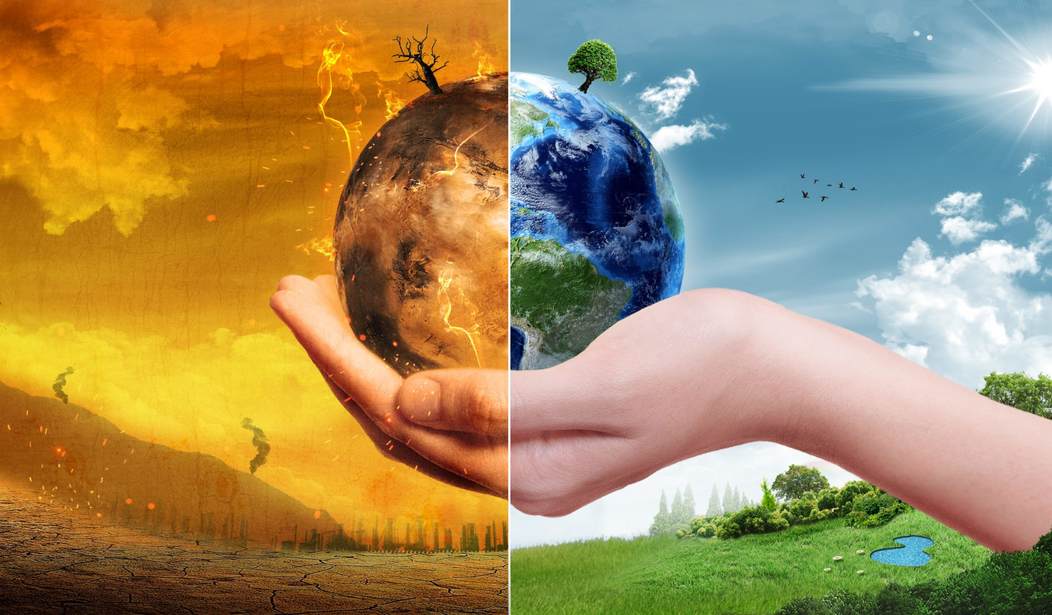It was thirty years ago, June 23, 1988, that NASA’s Dr. James Hansen testified before Congress, warning about the coming catastrophe to be caused by global warming.
At the time, Hansen gave three scenarios for climate change.
He called Scenario A “business as usual,” as it maintained the accelerating emissions growth typical of the 1970s and ’80s. This scenario predicted the earth would warm 1 degree Celsius by 2018. Scenario B set emissions lower, rising at the same rate today as in 1988. Mr. Hansen called this outcome the “most plausible,” and predicted it would lead to about 0.7 degree of warming by this year. He added a final projection, Scenario C, which he deemed highly unlikely: constant emissions beginning in 2000. In that forecast, temperatures would rise a few tenths of a degree before flatlining after 2000.
Thirty years of data have been collected since Mr. Hansen outlined his scenarios – enough to determine which was closest to reality. And the winner is Scenario C. Global surface temperature has not increased significantly since 2000, discounting the larger-than-usual El Niño of 2015-16. Assessed by Mr. Hansen’s model, surface temperatures are behaving as if we had capped 18 years ago the carbon-dioxide emissions responsible for the enhanced greenhouse effect. But we didn’t. And it isn’t just Mr. Hansen who got it wrong. Models devised by the United Nations Intergovernmental Panel on Climate Change have, on average, predicted about twice as much warming as has been observed since global satellite temperature monitoring began 40 years ago.
Why do scientists like Hansen still have credibility with most in the climate change advocacy community? He is telling them what they want to hear, despite mainstream scientific sources that debunk much of what he says:
As observed temperatures diverged over the years from his predictions, Mr. Hansen doubled down. In a 2007 case on auto emissions, he stated in his deposition that most of Greenland’s ice would soon melt, raising sea levels 23 feet over the course of 100 years. Subsequent research published in Nature magazine on the history of Greenland’s ice cap demonstrated this to be impossible. Much of Greenland’s surface melts every summer, meaning rapid melting might reasonably be expected to occur in a dramatically warming world. But not in the one we live in. The Nature study found only modest ice loss after 6,000 years of much warmer temperatures than human activity could ever sustain.
If Hansen was a baseball player, he would have been called out for swinging and missing so many times:
Several more of Mr. Hansen’s predictions can now be judged by history. Have hurricanes gotten stronger, as Mr. Hansen predicted in a 2016 study? No. Satellite data from 1970 onward shows no evidence of this in relation to global surface temperature. Have storms caused increasing amounts of damage in the U.S.? Data from the National Oceanic and Atmospheric Administration show no such increase in damage, measured as a percentage of gross domestic product. How about stronger tornadoes? The opposite may be true, as NOAA data offers some evidence of a decline. The list of what didn’t happen is long and tedious.
This data is from the IPCC, the holy bible of global warming hysterics. In fact, the IPCC has been walking back many of their own predictions the last few years. But Hansen and his hysterical colleagues continue to push an agenda based on politics, not science.
Foretelling the end of the world always makes good copy, which is why scientists like Hansen enjoy widespread media attention. But their moment in the sun may be nearing an end as it becomes more and more obvious that we have avoided catastrophe.










Join the conversation as a VIP Member